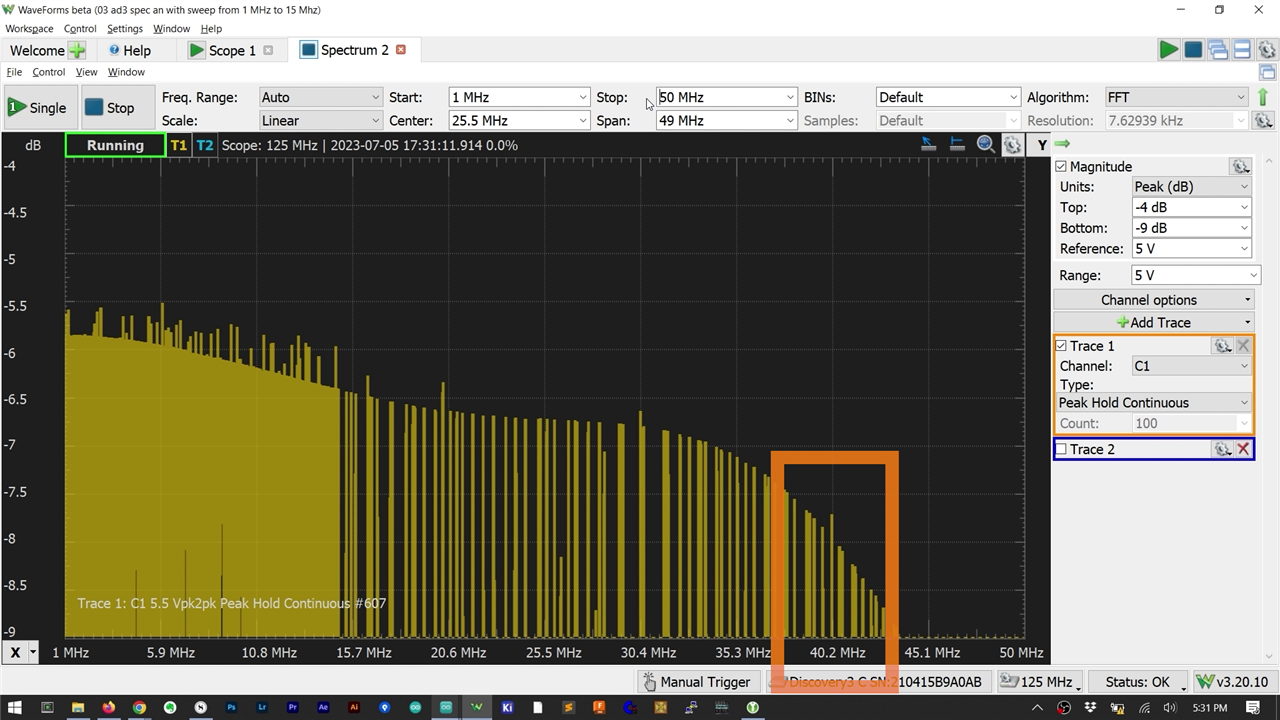Digilent’s Analog Discovery 3 is a multifunction electronics test tool. It includes an oscilloscope, function generator, spectrum analyzer, voltmeter, power supply, logic analyzer, and more. Learn how to use it to make a few everyday measurements and what James thinks of it overall.
Watch the Video:
Analog Discovery 3 (AD3) is incredibly useful for circuit debugging and design. This Workbench Wednesdays covers what the AD3 is, how it differs from the Analog Discovery 2, and demonstrates a few measurements you can do with one.

One key component of Digilent’s Analog Discovery family is its PC-based software, Waveforms. Even though some parts of the user interface can be daunting, James is enthusiastic about how easy it is to combine multiple instruments into a single user interface. Check out the AD2 ( Digilent Analog Discovery 2 Review -- Workbench Wednesdays 18 ) and Analog Discovery Pro 3000 ( Exploring the Digilent Analog Discovery 3000 Pro Series - Workbench Wednesdays 48 ) for more information about Waveforms.

Next, James uses the new Arduino Uno R4 to demonstrate a couple of digital measurements. First, he uses the Analog Discovery 3 Oscilloscope to verify that the R4 outputs 5 volts for a digital high. (The first 32-bit Arduino board to do this!) Then he uses the oscilloscope’s automatic measurements to measure the frequency of a digital pin toggling. He makes an unexpected discovery by using cursors and the AD3 Persistence mode.
One analogue measurement demo determines the AD3’s front-end bandwidth. (Does it agree with the datasheet?) James uses a sweeping function generator to input sine waves into the Analog Discovery 3 Spectrum Analyzer. See the bandwidth performance with BNC and without the optional Digilent Analog Discovery adapter .

Another analogue measurement available on Analog Discovery 3 is an impedance analyzer. This tool uses the waveform generator, oscilloscope, and optional adapter to generate Bode plots of passive components like capacitors, inductors, and filters. You can see their impedance, ESR, and more. Check out this tutorial on Bode plots ( Learn Three Ways You Can Create Bode Plots - Workbench Wednesdays 64 ) if you need a refresher!

In conclusion, James praises the Analog Discovery 3 as a highly capable and powerful test tool, making it a worthy upgrade for those who do not already own a similar device. The improvements in various aspects, along with its multifunctional nature, make it an excellent addition to any electronics workbench, especially for circuit debugging and design tasks. AD3 improves over AD2 in every regard. Digilent has only removed a few features from the new tool, Audio Jack and 1.8-volt support, but they have added several. For example, there is a mode with a faster sample rate (125 MHz!), and all tools have deeper memory.
Bonus Content:
- Exploring the Digilent Analog Discovery 3000 Pro Series - Workbench Wednesdays 48
- Digilent Analog Discovery 2 Review -- Workbench Wednesdays 18
- What's different with Analog Discovery 3
- element14 Presents: Decoding Capacitors: Understanding Types, Considerations, and Circuit Examples!
- Making an Analog Discovery 3 prop to "tear down."
Bill of Material:
| Product Name | Manufacturer | Quantity | Buy Kit |
|---|---|---|---|
| Analog Discovery 3 Series, 2 Channel, 30 MHz, 125 MSPS | Digilent | 1 | Buy Now |
| Analog Discovery 2 Impedance Analyzer Add-On (410-378) | Digilent | 1 | Buy Now |
| Transistor Tester for Analog Discovery (410-413) | Digilent | 1 | Buy Now |
| BNC Adapter Board (410-263) | Digilent | 1 | Buy Now |


Top Comments
-

dougw
-
Cancel
-
Vote Up
0
Vote Down
-
-
Sign in to reply
-
More
-
Cancel
-

scottiebabe
in reply to dougw
-
Cancel
-
Vote Up
0
Vote Down
-
-
Sign in to reply
-
More
-
Cancel
-

baldengineer
in reply to scottiebabe
-
Cancel
-
Vote Up
+1
Vote Down
-
-
Sign in to reply
-
More
-
Cancel
Comment-

baldengineer
in reply to scottiebabe
-
Cancel
-
Vote Up
+1
Vote Down
-
-
Sign in to reply
-
More
-
Cancel
Children